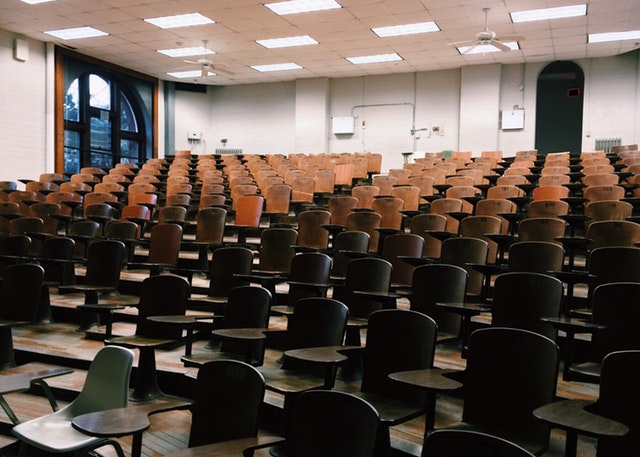Interesting article from NPR US on how many high paying vocational or trade jobs are vacant due to deference towards higher education, college or university, but often uncertain employment outcomes and lower salaries from the latter?
Why? Too many middle class see university as a path to upward mobility, but may indicate that some occupations guarantee employment and high salaries whether vocational or university?
Conversely, many university or college graduates struggle to find related employment and reasonable salaries versus many trade or vocational occupations, in demand. Meanwhile many developed nations have unskilled and skilled worker shortages made worse by ageing and decline in the working age population that has passed the ‘demographic sweet spot’, but compounded further by many deferring to higher education.
From NPR National Public Radio:
High-paying jobs that don’t need a college degree? Thousands of them sit empty
Like most other American high school students, Garret Morgan had it drummed into him constantly: Go to college. Get a bachelor’s degree.
“All through my life it was, ‘If you don’t go to college you’re going to end up on the streets,’ ” Morgan said back in 2018. “Everybody’s so gung-ho about going to college.”
So he tried it for a while. Then he quit and started training as an ironworker, which is what he was doing on a weekday morning in a nondescript high-ceilinged building with a concrete floor in an industrial park near the Seattle-Tacoma International Airport.
Morgan and several other men and women were dressed in work boots and hard hats, clipped to safety harnesses with heavy wrenches hanging from their belts. They were being timed as they wrestled 600-pound I-beams into place.
Back then, the demand for ironworkers was rising – and it still is: the sector is growing 4% annually, according to the Bureau of Labor Statistics. Ironworkers earn, on average, $27.48 per hour, or $57,160 per year. Morgan was already working on a job site when he wasn’t at the Pacific Northwest Ironworkers shop. At 20, he was earning $28.36 an hour, plus benefits.
Five years later, he’s on the job full time, working “six-10s” — industry lingo for 10 hours a day, six days a week. He helped build the Rainier Square Tower in Seattle and a data center for Microsoft. “I’m loving it every day,” he said. “It was absolutely the right choice.
As for his friends from high school? “Someday maybe they’ll make as much as me.”
Raising alarms
While a shortage of workers pushes wages higher in the skilled trades, the financial return from a bachelor’s degree is softening, even as the price, and the average debt into which it plunges students, remain high.
But high school graduates have been so effectively encouraged to get a bachelor’s that high-paid jobs requiring shorter and less expensive training are going unfilled. This affects those students and also poses a real threat to the economy.
“Parents want success for their kids,” Mike Clifton, who taught machining for more than two decades at the Lake Washington Institute of Technology before retiring, said in 2018. “They get stuck on [four-year bachelor’s degrees], and they’re not seeing the shortage there is in tradespeople until they hire a plumber and have to write a check.”
The Washington State Auditor found in 2017 that good jobs in the skilled trades were going begging because students are being almost universally steered to bachelor’s degrees. Recent labor statistics suggest that’s still the case – in Washington State and around the country.
President Biden, in his State of the Union address this month, spoke of “jobs paying an average of $130,000 a year, and many do not require a college degree.”
Among other things, the Washington auditor recommended that career guidance — including choices that require less than four years in college — start as early as the seventh grade.
“There is an emphasis on the four-year university track” in high schools, Chris Cortines, who co-authored the report, said after it was issued. Yet, nationwide, nearly three out of 10 high school grads who go to four-year public universities haven’t earned degrees within six years, the most recent figures from the National Student Clearinghouse show. At four-year private colleges, that number is nearly one in five.
“Being more aware of other types of options may be exactly what they need,” Cortines said. In spite of a perception that college “is the sole path for everybody,” he said, “when you look at the types of wages that apprenticeships and other career areas pay, and the fact that you do not pay four years of tuition and you’re paid while you learn, these other paths really need some additional consideration.”
And it’s not just in Washington state.
Today, nearly 90% of construction companies nationwide are having trouble finding qualified workers, according to the Associated General Contractors of America; in Washington, the proportion is 88%. Ironworkers remain in particularly short supply, along with drywall installers and sheet metal workers.
The $1.2 trillion federal infrastructure plan – Biden’s signature legislation passed by Congress in 2021 – will create 1.5 million construction jobs per year for the next 10 years, the White House says, boosting the share of all jobs that are connected with rebuilding the nation’s infrastructure from 11% to 14%, according to the Georgetown University Center on Education and the Workforce. Median wages for construction jobs are higher than the median pay for all jobs, the Bureau of Labor Statistics reports.
“The economy is definitely pushing this issue to the forefront,” Amy Morrison Goings, president of the Lake Washington Institute of Technology, which educates students in these fields, said in 2018. “There isn’t a day that goes by that a business doesn’t contact the college and ask the faculty, ‘who’s ready to go to work?’ “
In all, some 30 million jobs in the United States that pay an average of $55,000 per year don’t require bachelor’s degrees, according to the Georgetown Center on Education and the Workforce.
Yet the march to bachelor’s degrees continues. And while people who get them are more likely to be employed and make more money than those who don’t, that premium appears to be softening; their inflation-adjusted median earnings were lower in 2018, the most recent year for which the figure is available, than in 2010.
“There’s that perception of the bachelor’s degree being the American dream, the best bang for your buck,” said Kate Blosveren Kreamer, deputy executive director of Advance CTE, an association of state officials who work in career and technical education. “The challenge is that in many cases it’s become the fallback. People are going to college without a plan, without a career in mind, because the mindset in high school is just, ‘Go to college.’ “
It’s not that finding a job in the trades, or even manufacturing, means needing no education after high school. Most regulators and employers require certificates, certifications or associate degrees. But those cost less and take less time than earning a bachelor’s degree.
Tuition and fees for in-state students to attend a community or technical college in Washington State, for example, came to less than half the cost last year of a four-year public university, and less than a fifth of the price of attending the cheapest private four-year college.
Washington is not the only state nudging students into education for the trades. At least 39 states have taken steps to encourage career and technical education, and many have increased funding for it, a 2017 Brookings Institution review found.
At the federal level, legislation introduced in Congress in January would make some short-term workforce programs eligible for federal Pell Grants. “For too long, the college-for-all mentality drove Americans toward expensive and often ineffective education pathways,” its sponsors said. “As our country stares down a historic worker shortage, fewer Americans are getting the skills they need to be successful.”
The branding issue
Money isn’t the only issue, advocates for career and technical education say. An even bigger challenge is convincing parents that it leads to good jobs.
“They remember ‘voc-ed’ from when they were in high school, which is not necessarily what they aspire to for their own kids,” Kreamer said. Added Kairie Pierce, apprenticeship and college director for the Washington State Labor Council of the AFL-CIO: “It sort of has this connotation of being a dirty job. ‘It’s hard work — I want something better for my son or daughter.’ “
The Lake Washington Institute of Technology, about 20 miles from Seattle, changed its name from Lake Washington Technical College, said Goings, its president, to avoid being stereotyped as a vocational school.
These perceptions fuel the worry that, if students are urged as early as the seventh grade to consider the trades, then low-income, first-generation students, and students of color will be channeled into blue-collar jobs while wealthier and white classmates are pushed by their parents to get bachelor’s degrees.
“When CTE was vocational education, part of the reason we had a real disinvestment from the system was because we were tracking low-income and minority kids into these pathways,” Kreamer said. “There is this tension between, do you want to focus on the people who would get the most benefit from these programs, and — is that tracking?”
In a quest for prestige and rankings, and to bolster real-estate values, high schools also like to emphasize the number of their graduates who go on to four-year colleges and universities.
Jessica Bruce enrolled in community college after high school for one main reason: because she was recruited to play fast-pitch softball. “I was still trying to figure out what I wanted to do with my life,” she said.
But she “couldn’t quite figure it out,” she says today. She was an apprentice ironworker in 2018, making $32.42 an hour, or more than $60,000 a year, while continuing her training. At 5-foot-2, “I can run with the big boys,” she said at the time, laughing.
Five years later, now 46, she’s starting a job installing 500 tons of rebar for a Boeing hangar near Seattle, working mostly outside, which she likes. She’s also back in school, of sorts, taking online courses to get her certification to become a fitness instructor as a side gig. And she’s bought a Harley.
Bruce says she has “absolutely no regrets,” herself. As for her own daughter, who’s 15, “if it’s college then it’s college,” she says. “I fully support that.” But students now in high school “are becoming maybe a little bit more aware” of the potential for making good money in the trades, she added. “I know my daughter is aware. I’ve told her there’s every kind of trade out there.”
The original 2018 version of this story was co-reported with Ashley Gross of KNKX.
For related blogs and articles on adult learning, career guidance, demography, economics, industry based training, VET vocational education & training and younger generations click through:
University Higher Education or VET Vocational Training?
Soft Skills for Work and Employment


